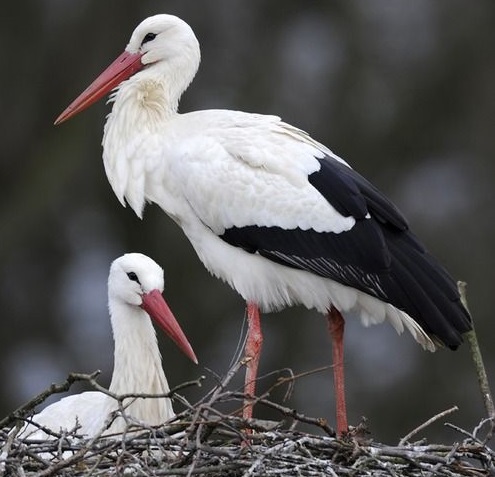Quite special
Stately high legs, a white with black plumage and a long orange pointy beak. The storks are hugely impressive birds. And Amsterdam is getting more and more of them. It began in Frankendael Park with an empty nest to attract the birds. And now each year the male awaits the female clacking. As she comes flying back from Africa.
Storks
With little birds, the human has such a strong connection, as with the stork. It is the only large and conspicuous species of birds that has been blossoming village, city and surroundings with its presence since immemorial, and preferably chooses human constructions as their breeding ground. Even though the bird was nearly gone for good in the Netherlands in the middle 70’s.
Folk tales about the stork as how he is the bringer of happiness and new life make it clear, that the bird is a welcomed guest. The storks that would originally do their nesting in The Netherlands were migratory birds, which stayed in our country from March to September. (Source: www.vogelbescherming.nl.)
Above the children’s playground
“Scarce breeding bird”, it says on the website of the bird protection. But not where we are; by 2015, there were no less than 8 breeding pairs in Amsterdam. The nest in Frankendael was placed above a children’s playground on an old chimney. Each year there are young storks. Unfortunately the young ones don’t survive every year.
Trekking to Africa
In September the storks prepare to fly to the South. But not all the storks do the same. The young ones from 2013 are never far away from the parental nest. They just hibernate in Artis, nice and easy ;o).
Rings
Every year the new storks get ringed. That happens with the help of the fire brigade. The storks have their own unique number strap around their leg. So the people of the bird’s guard can track if the storks actually fly to Africa or not.
Feeding
Never feed the storks! They can currently find food in nature and they are meat eaters. They eat frogs and other critters like mice, earthworms and large insects. Especially the stomachs of the young ones can’t digest bread properly.
Also in other spots you can see storks on nests, like: in the Amstel park, the Vondelpark, Flevopark, the Natuurpark Vrije Geer, the Plantage Muidergracht and the Kalfjeslaan.

